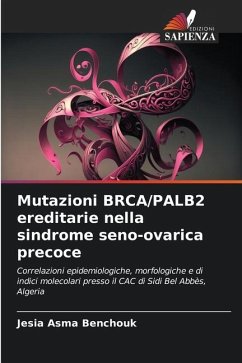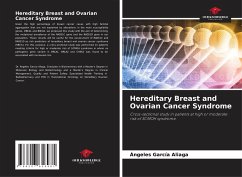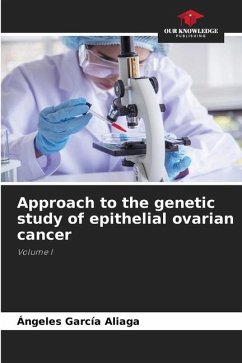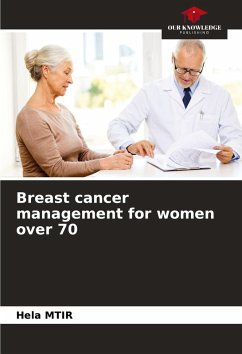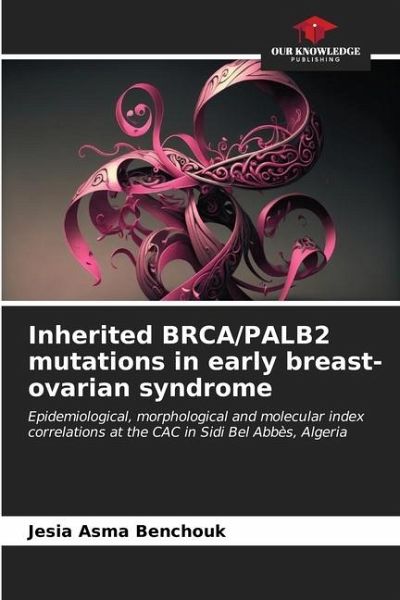
Inherited BRCA/PALB2 mutations in early breast-ovarian syndrome
Epidemiological, morphological and molecular index correlations at the CAC in Sidi Bel Abbès, Algeria
Versandkostenfrei!
Versandfertig in 6-10 Tagen
40,99 €
inkl. MwSt.

PAYBACK Punkte
20 °P sammeln!
The morphological particularities of invasive carcinomas of the breast occurring in the context of hereditary predispositions have been described, but are few in number. The frequency of inherited BRCA1 mutations is of the order of 3 to 4% in the breast cancer patient population. These carcinomas are non-specific and exceptionally of another histological type, high-grade with a lymphocyte-rich stroma in 85% of cases and triple-negative phenotype without HER2 amplification. In the presence of other inherited BRCA2, CHECK2, ATM or PALB2 mutations, breast carcinomas are frequently grade 3, non-sp...
The morphological particularities of invasive carcinomas of the breast occurring in the context of hereditary predispositions have been described, but are few in number. The frequency of inherited BRCA1 mutations is of the order of 3 to 4% in the breast cancer patient population. These carcinomas are non-specific and exceptionally of another histological type, high-grade with a lymphocyte-rich stroma in 85% of cases and triple-negative phenotype without HER2 amplification. In the presence of other inherited BRCA2, CHECK2, ATM or PALB2 mutations, breast carcinomas are frequently grade 3, non-specific and luminal B. Inherited TP53 mutations occur in young women under 50, and are amplified for HER2 in over 70% of cases. The use of therapies such as PARP inhibitors for patients whose tumors present a homologous recombination defect implies looking for a constitutional mutation in a predisposition gene (currently BRCA/PALB2). Morphological characteristics are not sufficient to identify patients most at risk.




